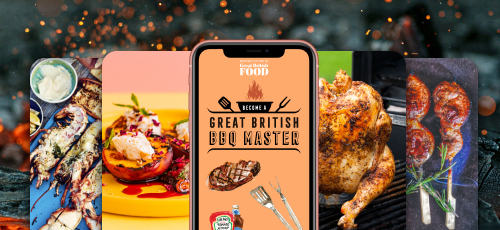Whether you're a coeliac or entertaining friends and family, this handy guide is packed with tricks and tips to help you navigate the world of gluten-free baking with ease, and flavour…
Q: What are your top tips for baking gluten-free bread?
A: “Don't be afraid to bake with lots of different gluten-free flours as they all have varying properties and flavours. Plus, if you create your own flour blend you'll find that you're less likely to need to add unnecessary additives, fat or sugar. I love using combinations of buckwheat, tapioca and potato starch and teff and millet, but there are so many types of flour out there – have fun experimenting! Using a sourdough culture can also add flavour and improve texture, plus it has added health benefits.” - Lindsay Stark, Head Baker at modernbaker.com
“The main ingredient people have trouble with is xanthan gum, which is used in very small amounts to hold things together. It can either be omitted, or replaced with another odd sounding ingredient, psyllium husk. To achieve a texture that's comparable to regular bread (which gets a lot of its structure from gluten) you generally need to use a combination of three or four different gluten-free flours. The best way to start if you've never baked gluten-free bread before is to use a mixed flour blend. Put some time aside and dedicate a Sunday afternoon to baking – you'll soon work out how to make fantastic gluten-free bread.” - Caroline Byron, author of Gluten Free Naturally (£18.99, Kyle Books)
Q: I love baking cakes and sweet treats. What should I use instead of regular flour?
“You can substitute regular wheat flour for nuts, especially almonds and hazelnuts, polenta, or gluten-free flour. Brownies work well when baked with gluten-free flour, although the texture can be a little more 'sandy'. The trick is to keep the bake slightly underdone, or to add fruit such as cranberries or 'drunken' raisins to the mix. Tarts are trickier as the pastry can be very short and crumbly when made with-gluten free flour.” - Gerhard Jenne, Founder of Konditor & Cook (konditorandcook.com)
“You could also try adapting your favourite cake to make a gluten-free alternative. Follow your regular recipe, except with the following changes: swap the flour for a gluten-free alternative and simply add water, a tablespoon at a time, until the cake batter easily falls from the spoon. Due to the extra liquid needed to rehydrate the gluten-free flour, your cake may need an extra five minutes in the oven.” - Claire Marriage, Founder, Doves Farm, dovesfarm.co.uk
Q: I can't fathom never eating good quality pastry again! Mine always crumbles – what should I do?
“It's important to add enough water to gluten-free pastry to rehydrate the flour and prevent it from crumbling when rolling it out. Add enough water so that the dough is soft and sticky, cover, and rest in the fridge for 30 minutes. At that point, it will have absorbed the water and be much more manageable.” - Claire Marriage, Founder, Doves Farm, dovesfarm.co.uk
Q: I'm having trouble making gluten-free pizza dough! It's always too gooey and sticks to my fingers. Any tips?
“Pizza is tricky because you want it to be soft and flexible, but also rollable and crisp at the edges. It doesn’t tend to work with many of the rice-based flour mixes you can buy in the shops, so I'd recommend using a mixture of high protein flours like gram, quinoa, buckwheat or pea and some starch such as tapioca, along with a stabiliser like psyllium husk or chia seed to absorb the water and turn it into a dough. You should also use equal quantities of flour and water. The dough should feel soft and pliable, but not super sticky. Form it into balls using well oiled hands, rest for about an hour, then roll out on an oiled, not floured surface, before baking.” - Naomi Devlin, River Cottage's Nutrition Expert, rivercottage.net
Q: Can you suggest an easy, crowd-pleasing bake I can rustle up for gluten-free guests?
You can't go wrong with this delicious tart from Caroline Byron. Here at GBF we love eating it warm, just from the oven, with a crisp side salad.
Q: Can you recommend some gluten-free store cupboard essentials for bakers?
Here are some of the GBF team's tried and tested favourites – must-haves for any gluten-free baker!
Isabel's Gluten Free Pizza Base Mix, £3.25, ocado.com Developed in conjunction with Salvo's pizzeria in Leeds, this nifty mix makes Neapolitan-style thin crust pizzas – you won't notice the difference! Mrs Crimbles Pastry Mix, £2.20, ocado.comNever be stuck for tasty puds again thanks to this shortcrust pastry blend.
No Dough Ham & Mushroom Pizza, nodoughpizza.com If you're struggling to make your own gluten-free pizza, this will do the trick. The cauliflower base has a wonderful texture, and is delicious, too! Waitrose Lovelife 4 Rocky Roads, £2.25, waitrose.comDark chocolate, marshmallows and glacé cherries combine to create this utterly moreish bake.
Schar Free from Bourbon Biscuits, £1.40, ocado.comWe swear by Schar's gluten-free products, and these fantastic biscuits are no exception.
Organic Coconut Flour, £3.50, groovyfood.co.ukThis versatile flour is great for making bread, cakes, muffins, pancakes and more.
Warburtons Gluten Free Multiseed Rolls, £2.55. ocado.comThese survived our GBF sandwich test with aplomb and managed to hold a multitude of fillings without crumbling. Great for burgers, too.
Tesco Finest Free From Oat & Raisin Cookies, £1.80, tesco.comJust the thing to dunk in your tea – we can't get enough of their oaty texture.
Jus Rol Chilled Gluten Free Puff Pastry, £2, ocado.comPerfect for rustling up fuss-free tarts and pies in minutes.
-
Blog
• 2 weeks ago -
Blog
• 2 months ago -
Blog
• 3 months ago -
Blog
• 3 months ago
-
Review: Starling, Esher
2 weeks ago









_124_80_s_c1.jpg)



